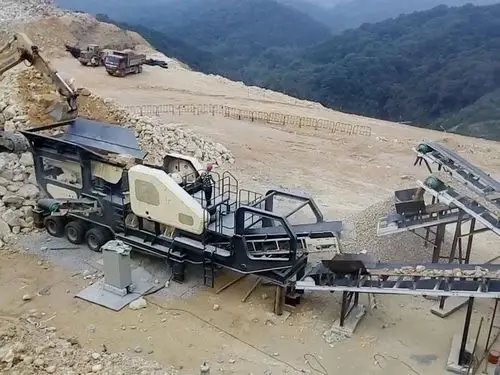In the iron ore processing industry, magnetite and hematite are the two most common raw materials. Their differences in magnetism, hardness, and particle size distribution determine not only the processing methods but also the equipment configuration. Choosing the wrong setup can lead to lower productivity, higher energy consumption, and reduced metal recovery, ultimately cutting into profit margins.
This article by Leemay Machinery analyzes how the distinct physical characteristics of these ores affect the selection of crushing, screening, and separation equipment.

1. Core Differences: The “Genetic Code” That Determines Processing Routes
| Key Indicator | Magnetite | Hematite |
|---|---|---|
| Magnetism | Strongly magnetic | Weakly magnetic |
| Mohs Hardness | 5.5–6.5 | 5.0–6.0 (more brittle) |
| Grain Size | Coarse-grained | Fine-grained |
| Processing Challenge | Avoid over-grinding and magnetic agglomeration | Achieve full liberation through fine grinding |
Conclusion:
Magnetite is well-suited for magnetic separation with careful control of crushing size.
Hematite, by contrast, requires fine grinding combined with strong magnetic separation or flotation, emphasizing mineral liberation efficiency.
2. Crushing Equipment: Tailored Strategies for Different Ore Properties
For Magnetite:
Due to higher hardness and toughness, a laminated crushing approach is ideal.
- Primary: Jaw Crusher
- Secondary: Single-Cylinder Hydraulic Cone Crusher
- Fine Crushing: Multi-Cylinder Hydraulic Cone Crusher
A closed-circuit screening system ensures controlled particle size and minimizes fines.
For Hematite:
With lower hardness and higher brittleness, impact crusher is preferred.
- Primary: Jaw Crusher
- Secondary: Impact Crusher
- Fine Crushing: Impact Crusher+ Cone Crusher Combination
3. Screening Equipment: Precision in Particle Size Control
Magnetite Screening:
- Focus: Coarse particle control
- Equipment: Linear Vibrating Screen (single deck)
- Features: Anti-blocking design for moist conditions
Hematite Screening:
- Focus: Fine classification
- Equipment: Banana Screen (double deck, multi-stage)
- Purpose: Separate coarse fractions and collect fine grades for pre-treatment
4. Separation Equipment: Magnetism Defines the Processing Route
Magnetite Processing:
- Main Method: Magnetic separation.
- Equipment: Dry magnetic separator for coarse particles; wet magnetic separator for fine ones.
- Key: Adjust drum speed to maximize recovery.
Hematite Processing:
- Main Method: Strong magnetic separation + flotation.
- Key: Deslime before strong magnetic separation; control pulp pH to optimize reagent performance.
5. Production Line Comparison: From Characteristics to Configuration
| Process Stage | Magnetite Line | Hematite Line |
|---|---|---|
| Crushing | Jaw Crusher+ Single-Cylinder Cone + Multi-Cylinder Cone | Jaw Crusher+ Impact Crusher+ VSI (Impact) Crusher |
| Screening | Linear Vibrating Screen ×2 | Banana Screen ×2 |
| Separation | Dry + Wet Magnetic Separation | Strong Magnetic + Flotation |
| Power Consumption | ≤ 8 kW·h per ton | 12–15 kW·h per ton |
| Metal Recovery | ≥ 90% | 75–85% |
Conclusion
Effective iron ore processing begins with understanding the ore’s natural characteristics. Before designing a production line, conducting a comprehensive ore test is essential. This prevents costly mismatches that raise energy consumption and lower recovery rates.
For a complete turnkey solution or a customized quotation on magnetite and hematite production lines, contact Leemay Machinery — your reliable partner in mineral processing technology.

Leave a Reply